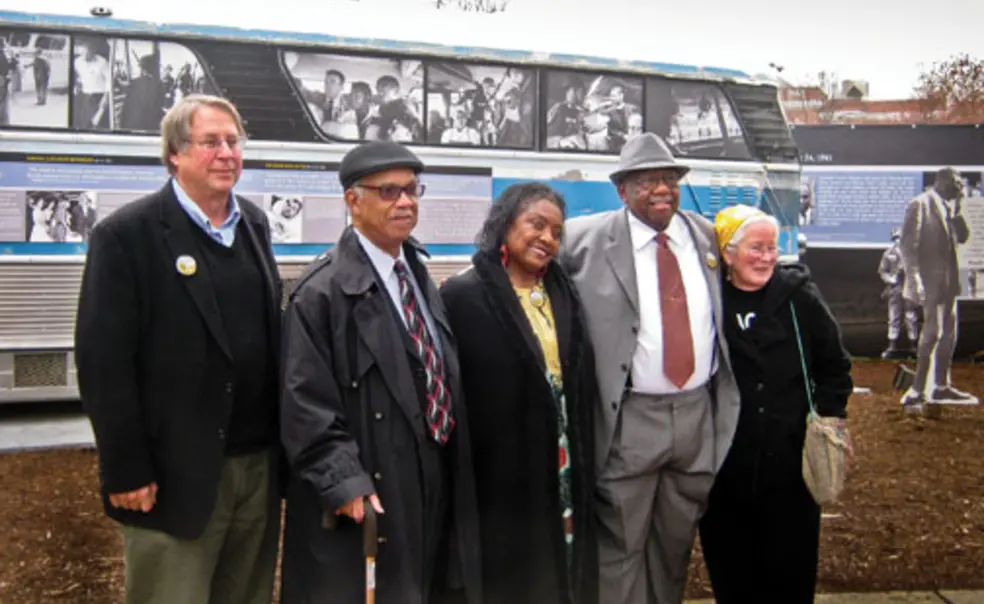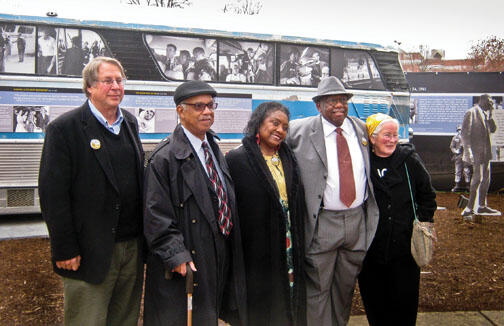When Raymond Arsenault ’69 was asked in 1998 to write a book for a series on pivotal moments in U.S. history, he knew just what moment to explore: the story of the Freedom Riders, which he felt largely had been ignored by historians.
The Freedom Riders included white and black men and women who risked their lives in 1961 to force the desegregation of interstate travel on buses and trains and in terminals in the Deep South, using nonviolent means. (See page 28 for a Q&A with Freedom Rider John Gager, a Princeton professor emeritus.)
No scholarly article or scholarly book had been written about them, Arsenault says, and when they appeared in book chapters, they were presented merely as a prelude to what came next in the civil-rights movement. Arsenault, however, saw their effort as a turning point in civil rights and American democracy.
Arsenault’s 2006 book Freedom Riders: 1961 and the Struggle for Racial Justice (Oxford University Press) helped bring their story to the fore. With a new documentary based on his book, Freedom Riders, which will be broadcast May 16 on PBS, the activists have taken center stage. The film was directed by Stanley Nelson for the PBS series American Experience.
A professor of Southern history at the University of South Florida, St. Petersburg, Arsenault worked with the film crew on everything from developing the script to finding images and TV footage. He also has been involved in a range of related programs — a touring museum exhibit, symposia, a website, educational materials, an Oprah special, and a re-creation of a Freedom Ride with 40 college students May 6–16.
The book and the film share the same essential message, he says: “It’s a very empowering story of ordinary people doing extraordinary things — using grassroots political activism and nonviolent direct action.”
The Freedom Riders set out to test the Deep South’s compliance with two Supreme Court decisions that had mandated the desegregation of interstate travel facilities. On May 4, 1961, 13 riders — seven black and six white — left on what they thought would be a two-week trip from Washington, D.C., to New Orleans. By the end, 436 people had participated in more than 60 rides. Many riders were beaten and thrown in jail, and a bus was firebombed in Anniston, Ala. Ultimately, the rides led to an Interstate Commerce Commission ruling that prohibited racial discrimination in interstate bus transit.
The Freedom Rides were the “first unambiguous victory” for the civil-rights movement, says Arsenault. The rides, he explains, “break the mystique of the Jim Crow South. ... They nationalize the movement in a way by saying, ‘We’re going to go into the toughest parts of Alabama and Mississippi. And if they beat us up, if they arrest us, if they kill us, we’ll just send more people in. We’ll fill the jails; we’ll outlast them with our commitment to nonviolence and civil rights.’ No one ever really tried that before” in the Deep South, says Arsenault.
Getting to know the riders and learning their stories, he says, has been “humbling” and has deepened his commitment to civil rights and social justice. An activist for many years, Arsenault was president of the Florida chapter of the ACLU.
Arsenault sees Freedom Riders, along with his biography of the great black singer Marian Anderson and his forthcoming biography of the African-American tennis star Arthur Ashe, as a trilogy of “stories that somehow historians missed that were important aspects of the evolution of race and civil rights in the 20th century.”












No responses yet